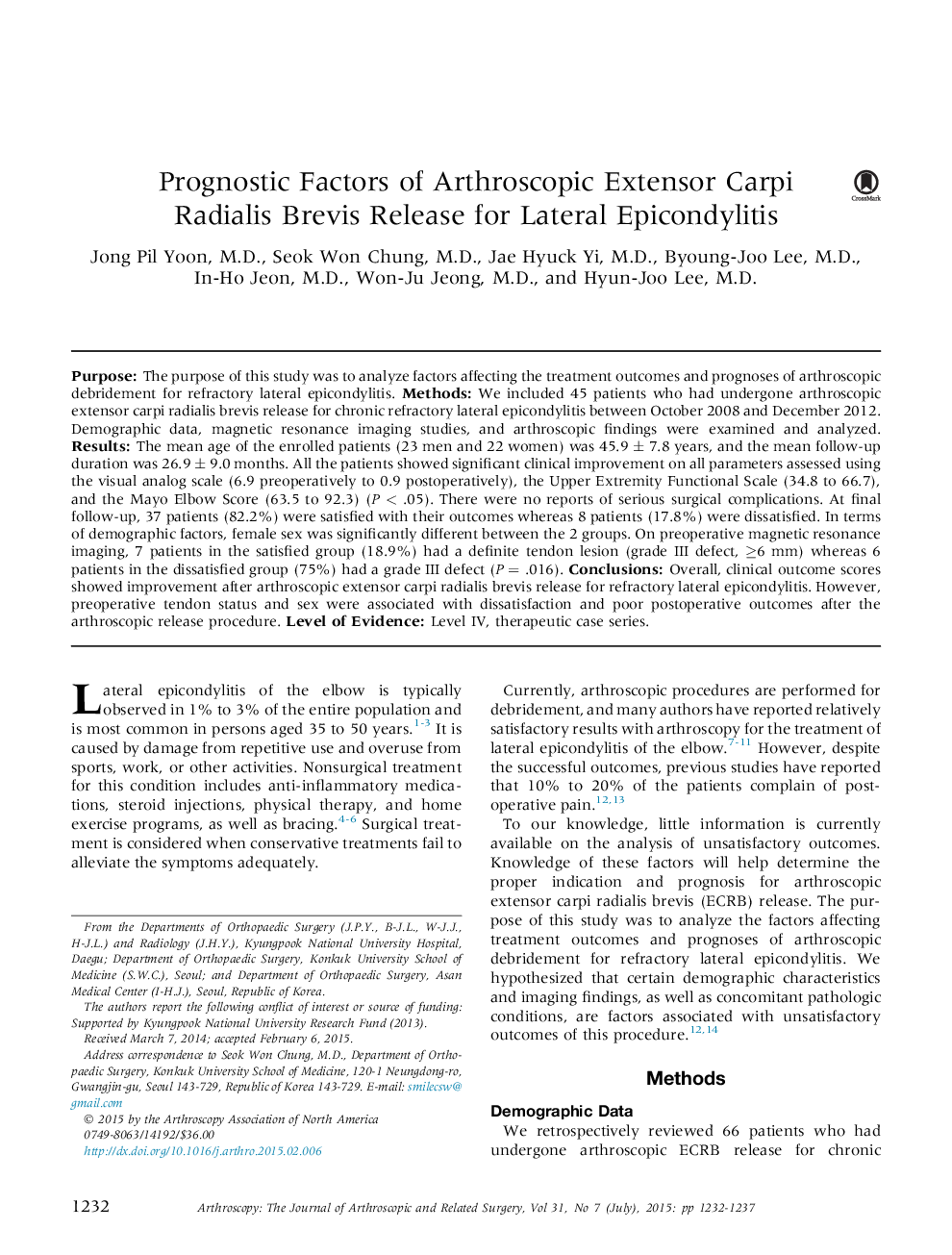| کد مقاله | کد نشریه | سال انتشار | مقاله انگلیسی | نسخه تمام متن |
|---|---|---|---|---|
| 4042346 | 1603481 | 2015 | 6 صفحه PDF | دانلود رایگان |

PurposeThe purpose of this study was to analyze factors affecting the treatment outcomes and prognoses of arthroscopic debridement for refractory lateral epicondylitis.MethodsWe included 45 patients who had undergone arthroscopic extensor carpi radialis brevis release for chronic refractory lateral epicondylitis between October 2008 and December 2012. Demographic data, magnetic resonance imaging studies, and arthroscopic findings were examined and analyzed.ResultsThe mean age of the enrolled patients (23 men and 22 women) was 45.9 ± 7.8 years, and the mean follow-up duration was 26.9 ± 9.0 months. All the patients showed significant clinical improvement on all parameters assessed using the visual analog scale (6.9 preoperatively to 0.9 postoperatively), the Upper Extremity Functional Scale (34.8 to 66.7), and the Mayo Elbow Score (63.5 to 92.3) (P < .05). There were no reports of serious surgical complications. At final follow-up, 37 patients (82.2%) were satisfied with their outcomes whereas 8 patients (17.8%) were dissatisfied. In terms of demographic factors, female sex was significantly different between the 2 groups. On preoperative magnetic resonance imaging, 7 patients in the satisfied group (18.9%) had a definite tendon lesion (grade III defect, ≥6 mm) whereas 6 patients in the dissatisfied group (75%) had a grade III defect (P = .016).ConclusionsOverall, clinical outcome scores showed improvement after arthroscopic extensor carpi radialis brevis release for refractory lateral epicondylitis. However, preoperative tendon status and sex were associated with dissatisfaction and poor postoperative outcomes after the arthroscopic release procedure.Level of EvidenceLevel IV, therapeutic case series.
Journal: Arthroscopy: The Journal of Arthroscopic & Related Surgery - Volume 31, Issue 7, July 2015, Pages 1232–1237